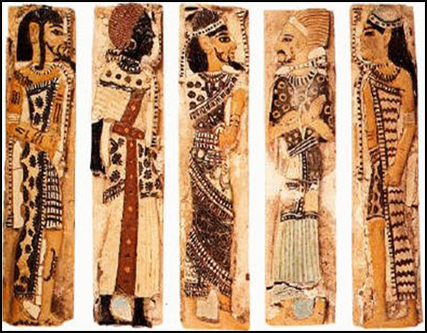 Different nationalities depicted in tomb of Ramses III: Libyan, Nubian, Syrian, Bedouin, & Hittite
Different nationalities depicted in tomb of Ramses III: Libyan, Nubian, Syrian, Bedouin, & HittiteAFRICAN HERITAGE SUNDAY
Sunday, February 24, 2013
Guest Writer for This Unit: Ann Gable, Teacher, St. Paul Church, Pittsburgh, PA
The unit you are viewing, African Heritage Sunday, is a compact unit. This means that it does not have a supporting cultural resource unit and a complete worship unit. Instead, to enliven the imagination of preachers and teachers, we have provided a scripture text that we suggest for this moment on the calendar along with a sermonic outline, suggested links, books, articles, songs, and videos. For additional information, see African Heritage Sunday in the archives of the Lectionary for 2008–2012.
I. Description of the Liturgical Moment
What is the relevance of African Heritage Sunday for African American Christians and all others in 2013? I would argue the following. First, African Heritage Sunday Lectionary materials enumerate in a fuller way the presence of Africa and Africans in the Bible. Too often Christians read the Bible through Eurocentric lenses and fail to understand that in biblical times Africa included much of what has been renamed the Middle East. Even Egypt is often moved out of Africa and into the Middle East in religious and theological writings! Too often, persons of African descent are unnamed in Scripture or through historical exegesis are minimized, caricatured, or eliminated. Knowing the truth sets us free and helps us embrace our true story. African Heritage Sunday should cause all Christians to take a fresh and thorough look at the history of Africa and its relationship to how Christians around the world now study and understand the Bible.
Most Christians know little of Africa before the end of the nineteenth century, which was a colonial “climax.” Musa W. Dube writes of this period as follows:
Each Western colonial power was poised to grab and own every available piece of Africa. There was such high competition and tension between colonial powers that it necessitated regulation to avoid a war. The situation led to the infamous Berlin Conference of 1884–85, which sought a more agreeable way of partitioning the African continent among Western colonial powers. This was the so-called Scramble for Africa. African communities and their lands were, of course, neither consulted nor invited to the Berlin Conference. The participants were Western European powers, traders, and their missionaries…. We bear the wounds of the “Scramble for Africa” upon our bodies and lands…. In sub-Saharan Africa, biblical interpretation, its institutions, and readers will always be related to modern colonial history, for the Scramble for Africa was the Scramble for Africa through the Bible.1
Second, these materials and the celebration of this moment in 2013 posit a relationship between today’s African Americans and Africans in the Bible (most of whom do not appear to have been in West Africa, the place where most Africans brought to America during slavery resided). One, they suggest that there are analogies that can be drawn from our biblical African ancestors for us today. This is clearly shown through today’s texts that feature Simon of Cyrene. Two, we are still one with our ancestors. The continent, our Motherland, makes us one! Whether we were born in Memphis or Hawaii, we are descended from the Motherland in all of its shades, hues, and beauty. Three, our African Traditional Religions, that we indeed brought with us from West Africa to America (versions of which can still be found throughout Africa), also unite us. Even in 2013 it is almost impossible not to be able to discern our worship (faith) distinctives wherever you find us in America. In spite of the inculcation of white American culture on our religion and some fraying around our faith edges, our worship is still unique and visible. Fourth, and perhaps more importantly, our similar experience of having had our Motherland pillaged, stripped, and damaged for the use of others throughout history unites us.
Third, the relevancy of African Heritage Sunday is summed up by Dr. Jeremiah Wright Jr., who wrote in the 2012 African Heritage compact unit:
Africans in the Diaspora (in general) and Africans in the Black Atlantic (in particular) have a long history which predates the Transatlantic Slave Trade.2 African Christians in the three Americas have a highly textured “story” that starts in Acts 2, runs through Acts 8 in Ethiopia in the first century C.E., and is exponentially accelerated by baptisms in Luanda in the 17th Century C.E. (1619) before the Jamestown Settlement saw Angolans for the first time.
God who loves this world started the creation of this world on the continent of Africa,3 breathed into African nostrils God’s ruach (the breath of life), and humans first became living souls (nephesh) made in the image of God somewhere between modern-day Zimbabwe and Addis Ababa. Paleontology, archaeology, and cultural anthropology all attest to this theological truth.
II. African Heritage Sunday: Sermonic Outline
A. Sermonic Focus Text(s): Matthew 27:30-31, Mark 15:18-21, Luke 23:24-26
Matthew 27:30-31
(v. 30) They spat on him, and took the reed and struck him on the head. (v. 31) After mocking him, they stripped him of the robe and put his own clothes on him. Then they led him away to crucify him. (v. 32) As they went out, they came upon a man from Cyrene named Simon; they compelled this man to carry his cross.
Mark 15:18-21
(v. 18) And they began saluting him, “Hail, King of the Jews!” (v. 19) They struck his head with a reed, spat upon him, and knelt down in homage to him. (v. 20) After mocking him, they stripped him of the purple cloak and put his own clothes on him. Then they led him out to crucify him.
(v. 21) They compelled a passer-by, who was coming in from the country, to carry his cross; it was Simon of Cyrene, the father of Alexander and Rufus.
Luke 23:24-26
(v. 24) So Pilate gave his verdict that their demand should be granted. (v. 25) He released the man they asked for, the one who had been put in prison for insurrection and murder, and he handed Jesus over as they wished.
(v. 26) As they led him away, they seized a man, Simon of Cyrene, who was coming from the country, and they laid the cross on him, and made him carry it behind Jesus.
B. Possible Sermon or Lesson Titles
i. Carrying the Weight of the World
ii. It Would Be a Black Person
iii. Who Helps Jesus?
C. Point of Exegetical Inquiry
 |
As Jesus was carrying his cross out of Jerusalem to the place of execution, a man named Simon of Cyrene was coming in (Matthew 27:30-31, Mark 15:18-21, and Luke 23:24-26), and the soldiers compelled him to carry the cross of Jesus. The word angareuo (Greek gamma corresponds to English “ng” as in “finger”), here used for “compel,” is a technical one, perhaps better translated “impress,” and referring to the legal right of a soldier to require a provincial to carry his gear one mile for him. The word occurs in the New Testament only here and in Matthew 5:41. Mark calls him “the father of Alexander and Rufus” without further explanation, perhaps taking it for granted that his readers would all know who Rufus and Alexander are. |
With these thoughts as our backdrop, I now present a sermonic outline for African Heritage Sunday
III. Introduction
Each of the Synoptic Gospels indicates that Simon of Cyrene (a city in northern Africa) was compelled to carry the cross upon which Christ died. Simon could not have foreseen it, but his kin “Africans in the Diaspora (in general) and Africans in the Black Atlantic in particular” have become champion cross-bearers. A part of our pain and our greatness as African Americans is tightly tied to the fact that we have been cross-bearers willingly and unwillingly. A part of America’s unhealed wound is its guilt and inability to sincerely apologize and offer proper reparations to black folk who (with the possible exception of the Native Americans) have carried the heaviest cross ever borne by citizens of this nation. Even today, we can see visceral refusal of many to accept the presence of a black man as the nation’s leader. It is impossible to accept as your leader those whom you do not accept as your equal. It is even harder to accept as your equal those whom you have oppressed.
In this new year, with all of its fiscal, mental, and spiritual cliffs, the critical question is who will bear the cross of the most vulnerable—those who are beat down, through no fault of their own, like Jesus. Who will bear the cross of the frail, the chronically poor, and the children? Who will bear the cross of those who are treated unjustly, the orphans, and the mentally ill?
In 2013, in homage to our ancestors, let’s flip the cross-bearing script from what we have to do (when we are compelled like Simon and the enslaved in the Americas) to cross-bearing that we choose to do. On this point Dr. Maurice C. Taylor writes:
Rather, the significance of the story of Simon of Cyrene is that the most important crosses that we will bear in our lives belong to someone else. Thus, how well we bear our personal crosses, whether of our own making or an accident of birth, is much less of a story than how well we carry the crosses of family, friends and perhaps most importantly, the crosses of strangers.
Like Simon, we rarely have an opportunity to select the crosses that we are compelled to carry. Frequently we are merely happy bystanders to the lives of family, friends and strangers when it becomes clear that their cross is now ours to carry. We often feel exceedingly sorrowful for ourselves at the injustice and unfairness of having to bear crosses that are not our own. And yet, like Simon of Cyrene, it is typically the case that the most important thing that we will do in our lives is carry someone else’s cross, if only for a little while, until they are able to pick up their cross and resume their journey.4
How shall we continue the tradition of Simon of Cyrene, our brother from Africa? Cross-bearing not because we are forced, but cross-bearing because we are compelled by the love of Christ and the example of Simon and Christ.
IV. Moves/Points
Move/Point One – Black people have always borne crosses.
a. The history of cross-bearing;
b. The history of cross-bearing by black folk;
c. Simon is our kindred cross-bearer.
Move/Point Two – Whose cross are you bearing now?
a. We need not carry unnecessary crosses wrongly placed on us by others;
b. We must not fail to carry the crosses for others who cannot bear their own;
c. There is redemption in cross-bearing.
Move/Point Three – Jesus is our cross-bearer.
a. Jesus came to be our cross-bearer;
b. Jesus is still helping us bear our crosses and those of others;
c. Simon carried the cross but Jesus died on it.
V. Challenge
Africa, oh Africa, how I love this land. Oh Africa, Oh Africa, the homeland of my soul. Bob Marley, in his song titled “Africa Unite,” says:
How good and how pleasant it would be
Before God and man, yeah
To see the unification of all Africans, yeah
As it’s been said already let it be done, yeah
We are the children of the Rastaman;
We are the children of the Iyaman.5
Indeed, how pleasant and glorious it would be before our ancestors to see the unification of all Africans. We pray that the struggle for unity continues in 2013.
VI. Sounds, Sights, and Colors in These Passages
| Sounds: |
Jesus being struck on the head; the mocking of Jesus; the words of those who compelled Simon to carry Jesus’ cross;
|
| Sights: |
Spit being hurled; spit landing; Pilate giving the verdict to release a guilty man and arrest Jesus; the crowd present as Jesus marched to Calvary; Jesus being mockingly saluted; Jesus being beaten; Jesus being stripped of the purple cloak; Jesus’ own clothes being put on him; Simon entering the city and being seized and compelled to carry the cross of Jesus; Simon carrying the cross of Jesus; and
|
| Colors: |
The purple cloak; the green reed; and the red blood of Christ. |
VII. Songs to Accompany This Sermon
A. Well-known Song(s)
- Shut De’ Do’. By Randy Stonehill
- This Day. By Edwin Hawkins
- Get on Board, Little Children. Traditional
B. Modern Song(s) (Written between 2005–2012)
- Not Forgotten. By Israel Houghton and Aaron Lindsey
- Set Me Free. By Myron Butler
C. Spiritual(s)
- Over My Head. Spiritual
- Spirit Song. By John Wimber. Arr. by James Abbington
- Siakudumisa. Traditional (South African). Arr. by S.C. Molefe
- Guide My Feet. Traditional
D. Liturgical Dance Music
- African Medley (Royal Kingdoms, Rise, My Native Land). By Gary Hines and Terry Lewis
- Rock-A My Soul. Spiritual. Arr. by Howard Roberts. This song can be performed with the choir and liturgical dancers.
- Broken Sorrow. By T. Escobar, D. Escobar, Nuttin But Stringz, and A. Varela Da Veiga
E. Song(s) for the Period of Prayer
- His Strength Is Perfect. By Steven Curtis Chapman and Jerry Salley
- Bayete Inkosi. By Fini de Gersigny
- Jabulani Africa. By Fini de Gersigny. This song is for children and youth.
Jesus, life and hope to heal our land
Savior, reaching out with your mighty hand
Bridge
Sing for joy O Africa
The Lord your God is risen upon you
Sing for joy O Africa
The Lord your God is risen upon you now.
Chorus
Jabulani, Jabulani Africa
Jabulani, Jabulani Africa
Repeat
Jesus, river of life to our thirsty land
Savior, meeting our needs with your mighty hands
Bridge/Chorus
- Siyahamba. South African folk song
- The Lord Will Hear the Just/Proclaim God’s Marvelous Deeds. By Kenneth Louis. For SATB
F. Sermonic Selection(s)
- Oh, Africa! Arr. by Francis Key
- I’ll Stand. By Raymond Wise
G. Invitational Song(s) or Instrumental(s)
- Thuma Mina. South African Spiritual (Zulu)
- Augustine of Hippo. By Harold T. Lewis. Tune by Marvin Curtis
- Something Within. By Lucie E. Campbell
H. Benediction Song(s)
- Precious Lord, Take My Hand. By Thomas Dorsey
- Blessings. By Karen Clark-Sheard, J. Drew Sheard, and Charles Woolfork
VIII. Videos, Audio, and/or Interactive Media
IX. Books to Assist in Preparing Sermons, Bible Studies, and/or Worship Services Related to African Heritage Sunday
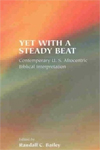 |
Bailey, Randall C., ed. Yet With a Steady Beat: Contemporary U.S. Afrocentric Biblical Interpretation. Semeia Studies. Atlanta: Society of Biblical Literature, 2003. |
|
|
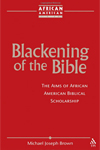 |
Brown, Michael Joseph. Blackening of the Bible: The Aims of African American Biblical Scholarship. Harrisburg, PA: Trinity Press International, 2004. |
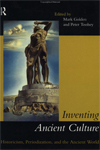 |
Golden, Mark and Peter Toohey, eds. Inventing Ancient Culture: Historicism, Periodization, and the Ancient World. New York: Routledge, 1997. |
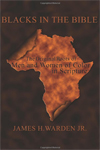 |
Warden, James H. Blacks in the Bible. Bloomington, IN: AuthorHouse, 2012. |
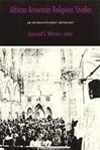 |
Wilmore, Gayraud, ed. African American Religious Studies: An Interdisciplinary Anthology. Durham, NC: Duke University Press, 1989. |
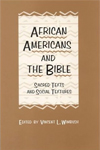 |
Wimbush, Vincent, L. African Americans and the Bible: Sacred Texts and Social Textures. New York: Continuum, 2001. |
X. Links to Helpful Websites for African Heritage Sunday
XI. Notes for Select Songs
A. Well-known Song(s)
- Shut De’ Do’. By Randy Stonehill
Location:
Lawrence, Donald & The Tri-City Singers. A Songwriter’s Point of View. Detroit, MI: Crystal Rose Records, 1972.
- This Day. By Edwin Hawkins
Location:
Holiday, Jennifer. Feel My Soul. Santa Monica, CA: Geffen, 1983.
- Get on Board, Little Children. Traditional
Location:
Robeson, Paul. The Essential Paul Robeson. Santa Monica, CA: Vanguard, 1987.
B. Modern Song(s) (Written between 2005–2012)
- Not Forgotten. By Israel Houghton and Aaron Lindsey
Location:
Houghton, Israel & New Breed. Decade. New York, NY: Integrity, 2012.
- Set Me Free. By Myron Butler
Location:
Double Take/Myron Butler. Brentwood, TN: EMI, 2007.
C. Spiritual(s)
- Over My Head. Spiritual
Location:
African American Heritage Hymnal. Chicago, IL: GIA Publications, 2001. #169
- Spirit Song. By John Wimber. Arr. by James Abbington
Location:
African American Heritage Hymnal. #321
- Siakudumisa. Traditional (South African). Arr. by S.C. Molefe
Location:
African American Heritage Hymnal. #122
- Guide My Feet. Traditional
Location:
African American Heritage Hymnal. #131
D. Liturgical Dance Music
- African Medley (Royal Kingdoms, Rise, My Native Land). By Gary Hines and Terry Lewis
Location:
Sounds of Blackness. Africa to America: The Journey of the Drum. Hollywood, CA: Perspective Records, 1994.
- Rock-A My Soul. Spiritual. Arr. by Howard Roberts. This song can be performed with the choir and liturgical dancers.
Location:
Alvin Ailey. Revelations. New York, NY: Alvin Ailey Dance Theatre Foundation, 1998.
- Broken Sorrow. By T. Escobar, D. Escobar, Nuttin But Stringz, and A. Varela Da Veiga
Location:
Nuttin But Stringz. Struggle from the Subway to the Charts. New York, NY: Koch Records, 2006.
E. Song(s) for the Period of Prayer
- His Strength Is Perfect. By Steven Curtis Chapman and Jerry Salley
Location:
Winans, CeCe. Alone in His Presence. Nashville, TN: Sparrow Records, 1995.
- Bayete Inkosi. By Fini de Gersigny
Location:
The Praise Worship Songbook Eight
Integrity Media, Inc.
1000 Cody Rd.
Mobile, AL 36695
Phone: 1-800-533-6912
Online location: www.integritymusic.com
- Jabulani Africa. By Fini de Gersigny. This song is for children and youth.
Location:
Praise and Worship. Rejoice Africa. Kwa Zulu Natal. South Africa: Integrity Music, 2006.
The Praise Worship Songbook Eight
Integrity Media, Inc.
Phone: 1-800-533-6912
Online location: www.integritymusic.com
- Siyahamba. South African folk song
Location:
African American Heritage Hymnal. #164
- The Lord Will Hear the Just/Proclaim God’s Marvelous Deeds. By Kenneth Louis. For SATB
Location:
GIA Publications, Inc.
7404 South Mason Avenue
Chicago, IL 60638
Phone: 1-800-GIA-1358
Online location: www.giamusic.com
Sample Audio: http://www.giamusic.com/mp3s/5744.mp3
F. Sermonic Selection(s)
G. Invitational Song(s) or Instrumental(s)
- Thuma Mina. South African Spiritual (Zulu)
Location:
African American Heritage Hymnal. #564
- Augustine of Hippo. By Harold T. Lewis. Tune by Marvin Curtis
Location:
Boyer, Horace Clarence. Lift Every Voice and Sing II: An African American Hymnal. New York, NY: Church Pub., 1993. #45
- Something Within. By Lucie E. Campbell
Location:
African American Heritage Hymnal. #493
Church of God in Christ. Yes, Lord! Church of God in Christ Hymnal. Memphis, TN:
Church of God in Christ Pub. Board in association with the Benson Co., 1982. #454
H. Benediction Song(s)
- Precious Lord, Take My Hand. By Thomas Dorsey
Location:
Franklin, Aretha. Christmas Hymns & Good Gospel Music #2. New York, NY: Universal, 1995.
- Blessings. By Karen Clark-Sheard, J. Drew Sheard, and Charles Woolfork
Location:
Sheard, Karen Clark. All in One. Detroit, MI: Karew Records, 2010.
Notes
1. Dube, Musa. “The Scramble for Africa as the Biblical Scramble for Africa: Postcolonial Perspectives.” Postcolonial Perspectives in African Biblical Interpretations. Edited by Musa W. Dube, Andrew M. Mbuvi, and Dora Mbuwayesango. Society of Biblical Literature, 2012.
2. See Dr. Ivan Van Sertima, They Came Before Columbus: The African Presence in Ancient America. New York, NY: Random House Trade Paperbacks, 2003.
3. See Cheikh Anta Diop, African Origins of Civilization: Myth or Reality? Chicago, IL: Lawrence Hill Books, 1989.
4. Taylor, Maurice. “Africentric Lesson from Simon of Cyrene.” Online location:
http://catholicreview.org/article/commentary/africentric/africentric-lessons-from-simon-of-cyrene (accessed 19 October 2012).
5. Marley, Bob. “Africa Unite.” Online location: http://www.azlyrics.com/lyrics/bobmarley/africaunite.html
|

